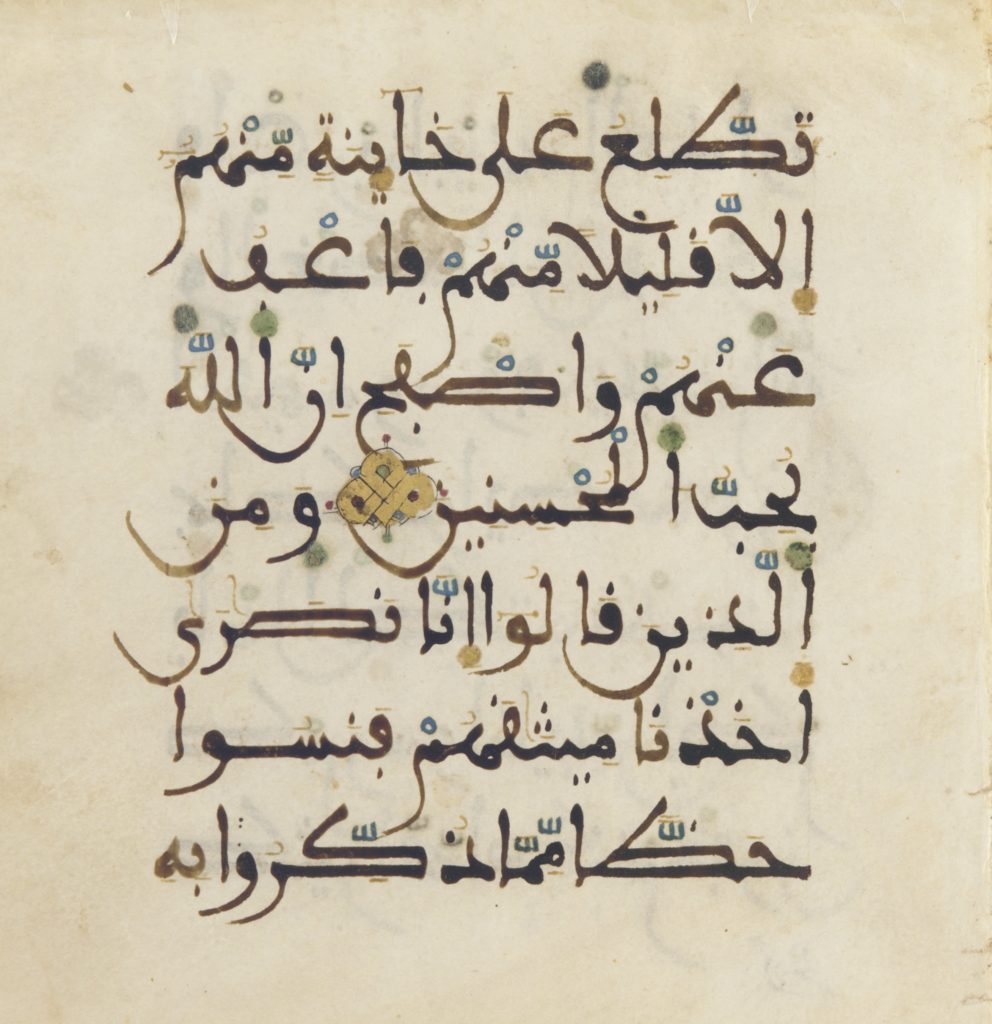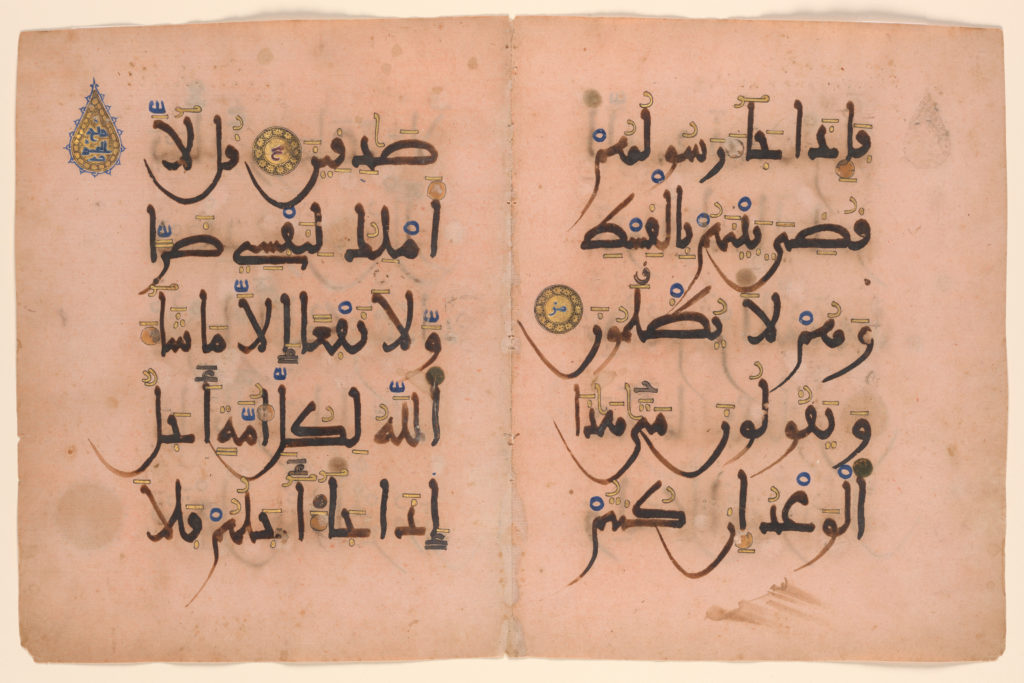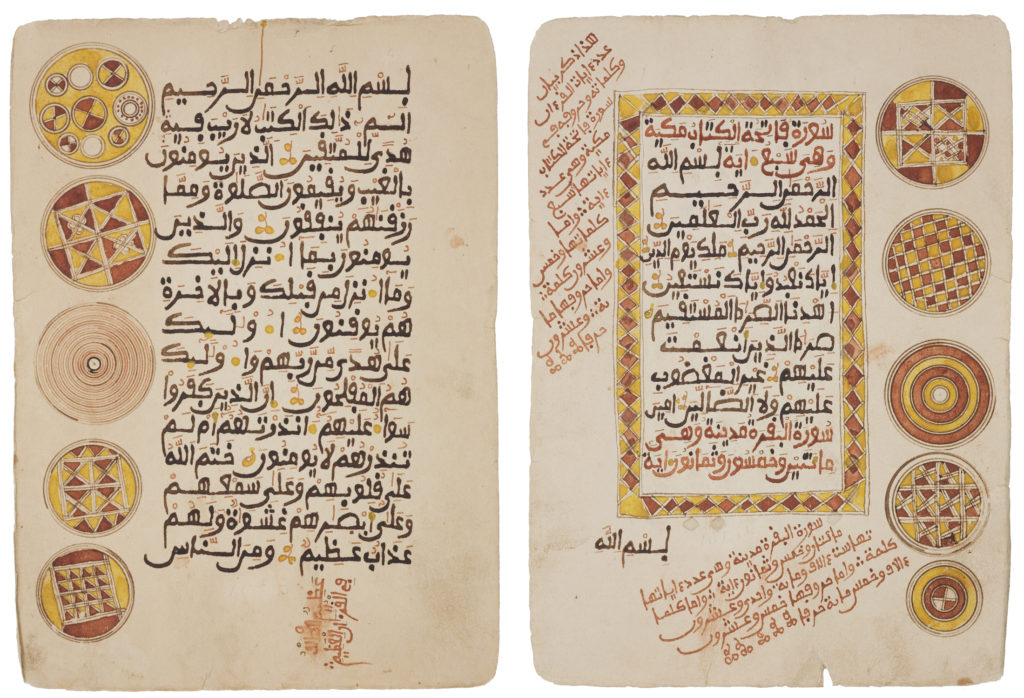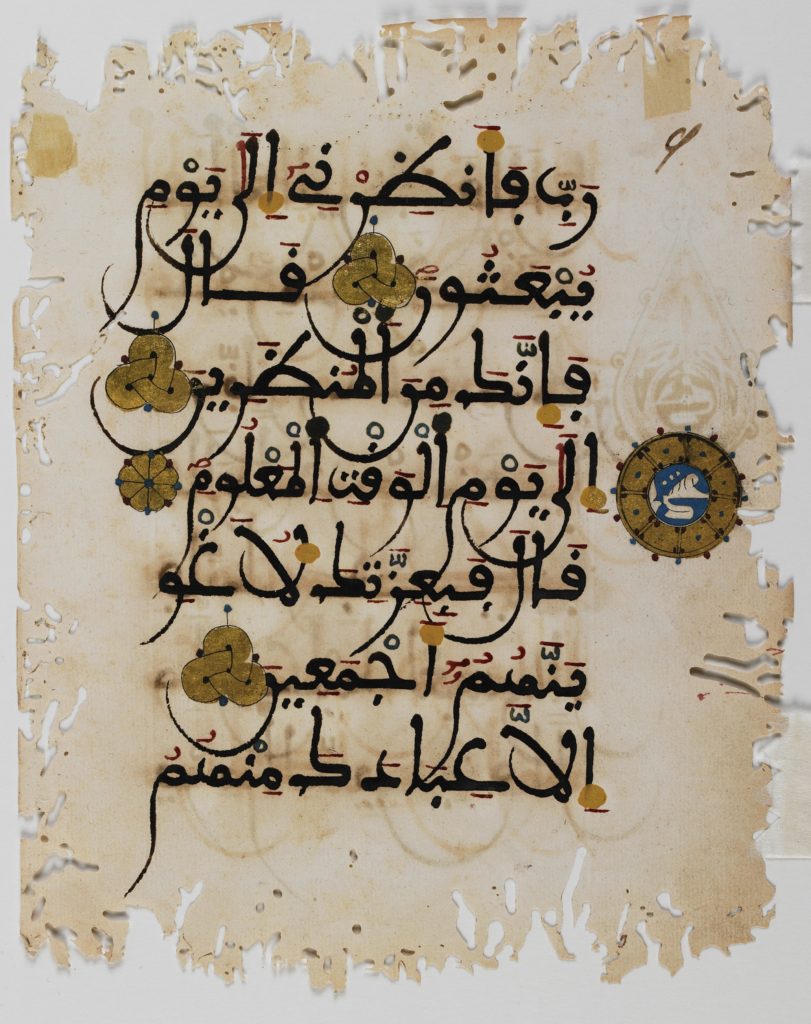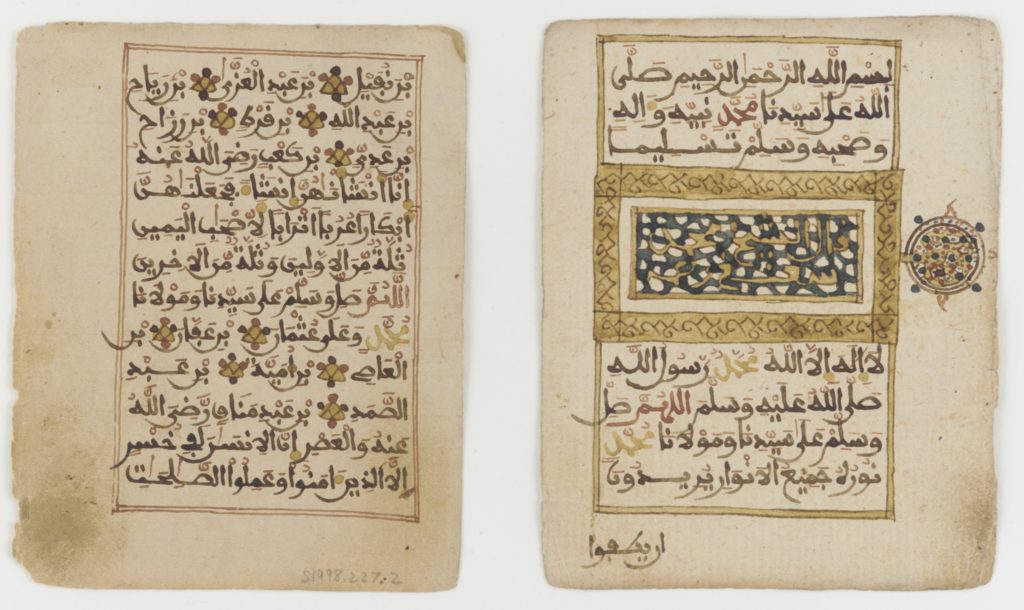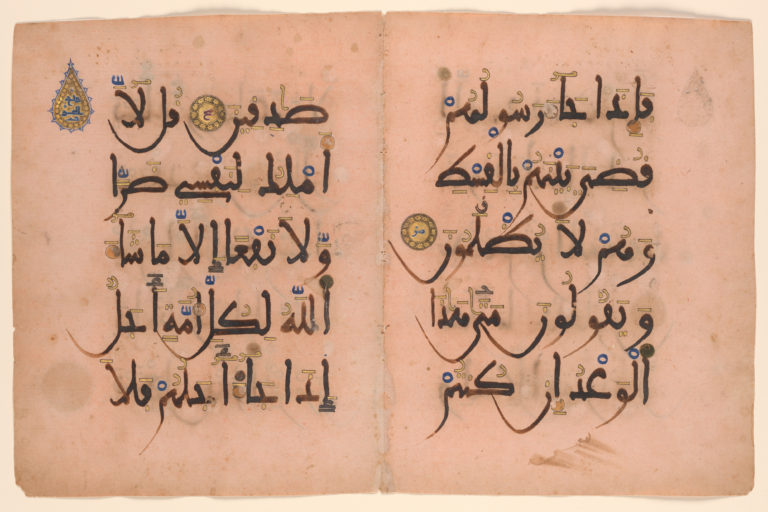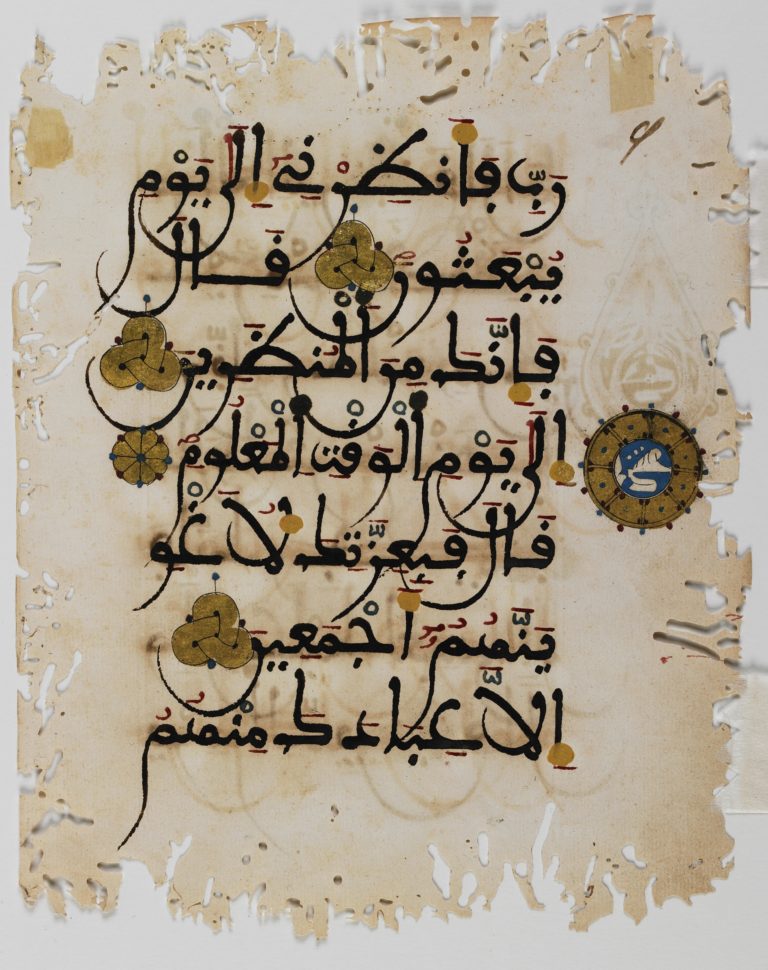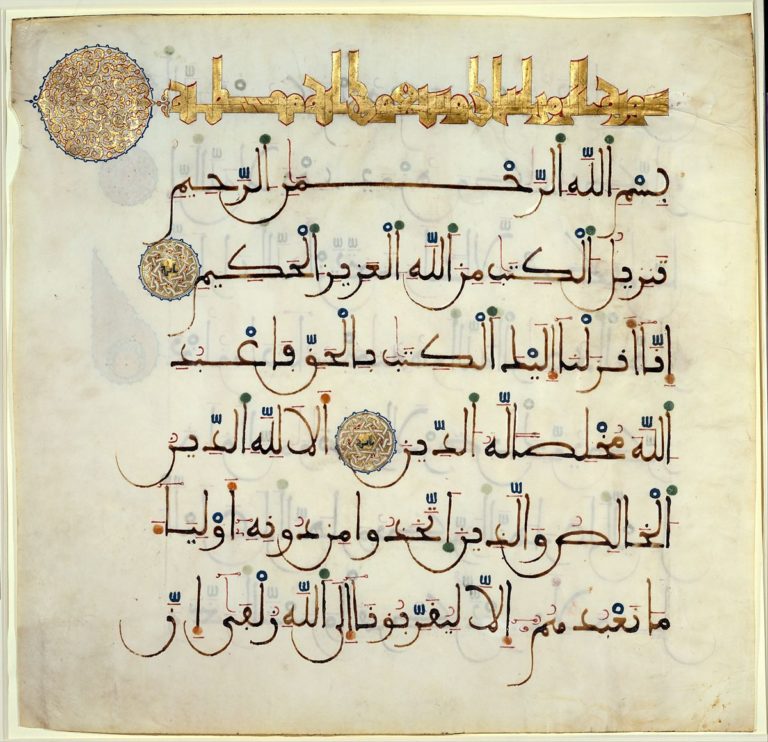Maghribi
(pronounced “mah-gre-bee”)
Meaning
- “Maghribi” means “western,” in Arabic and refers to the western Islamic world of North Africa and Spain, where this script (and its variants) developed
Uses
- Maghribi was used for writing the Qur’an as well as other scientific, legal and religious manuscripts.
Timeline
- Developed in the 10th century
- Still in use today in the western Islamic world, although its use is declining
Distinctive characteristics
- Descending strokes have large bowls with sweeping curves (loops)
- Strokes tend to be of uniform thickness
- Often written in brown ink
- Written on a horizontal baseline
- Vowel markings are often flat rather than slanted
- This script is derived from the earliest rounded script of the Arabian peninsula
Notes
- The 14th century historian Ibn Khaldun said that in the Maghrib (West) calligraphers were trained to write whole words, while in the eastern Islamic world, they were trained to write separate letters. This difference may explain why the letter shapes in the maghribi script are different from the shapes preferred in the East; letters change shape based on the word they are in, rather than on a series of prescribed rules
